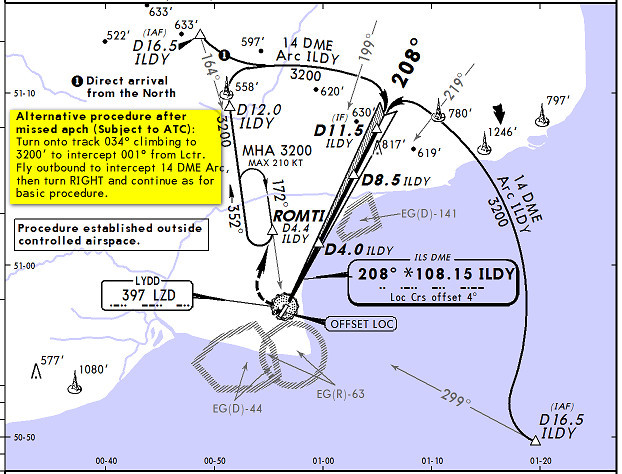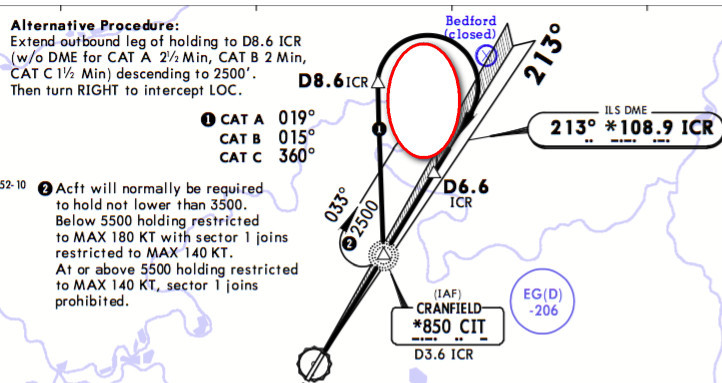Tap Suspend when you leave the beacon for the first time?
Tell it you’re entering the hold.
When I flew an ILS approach at Cranfield recently, I was held first and then flew the alternative procedure at 3500 feet. I found the GTN650 correctly showed a teardrop entry but when inbound it switched to VLOC mode presumably thinking it was on final. I was a bit unsure what to expect next and manually reverted it back to GPS. Later it switched to VLOC when intercepting the localiser after the alternate procedure.
Is this standard behaviour? Anything I should do to avoid VLOC while still in the hold?
Thanks for the responses! I might go to Cranfield next week. I expect that I am supposed to fly the “Alternative Procedure”, when leaving the hold for an instrument approach, but it keeps me wondering what the normal procedure should look like!
NCYankee wrote:
In the charts shown above, if there is a teardrop reversal turn, the course must be flown and a PT is not permitted.
If you look at the Cranfield chart, there is no PT charted. That is the problem. Other than the alternative procedure there is no clear way back outbound on the procedure. I too would just chuck in a PT if I had to but otherwise assume that the tower would tell me what they wanted me to do.
In the US. if a PT or a HILPT (Hold in lieu of a PT) is charted, it must be flown. There are four exceptions to this rule.
1) Vectors to final
2) NoPt is charted for a specific route or segment
3) ATC clears the A/C Straight In
4) Timed holds in progress
In the charts shown above, if there is a teardrop reversal turn, the course must be flown and a PT is not permitted. When a PT is charted, it may be flown as a traditional course reversal 45/225, or a 90/270, or 80/260, or hold, or whatever, as long as the course reversal is on the same side of the course as it is depicted and the turn is within the limits shown on the chart.
I too wondered about a PT (south of CIT) but they seem unusual in Europe. Is a PT always authorised, and obstacle clearance assured, unless explicitly banned which is how AFAIK it works in the USA?
I would do a Procedure Turn (45/180 or 80/260) in accordance with ICAO Doc 8168 Vol 1.
Alternatively, I wouldn’t any of that malarkey and I would fly the Alternative Procedure. :)
Cranfield used to be very busy with based ATPL training (until they went bust and then Cranfield dropped the landing fee to £5 and started to be friendly  ) so maybe “Sector 1” was done in the good old days as a “secret masonic handshake” sort of thing
) so maybe “Sector 1” was done in the good old days as a “secret masonic handshake” sort of thing 
It’s a very good Q. I would not have thought that the fact of having entered the hold (for whatever reason) should automatically lead to flying an “alternative procedure”. For example Lydd EGMD

shows an alternative procedure but you have to ask for it. OTOH that one does obviously follow from the hold exit (the 352 track).
Presumably it is not permitted to design a procedure which has obstacles within this area

so any reasonable intercept onto the LOC should be OK.